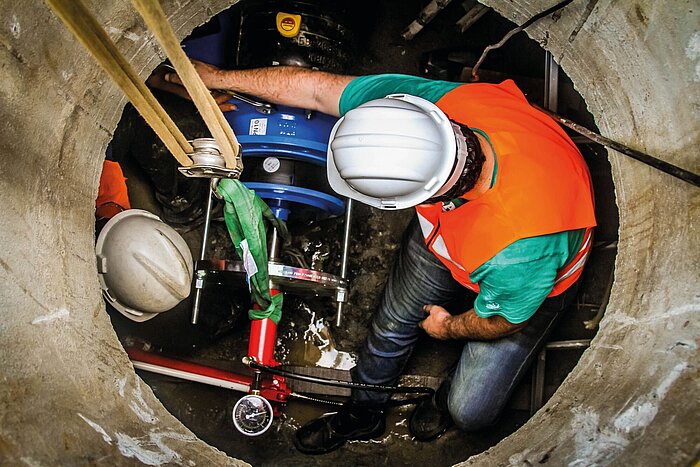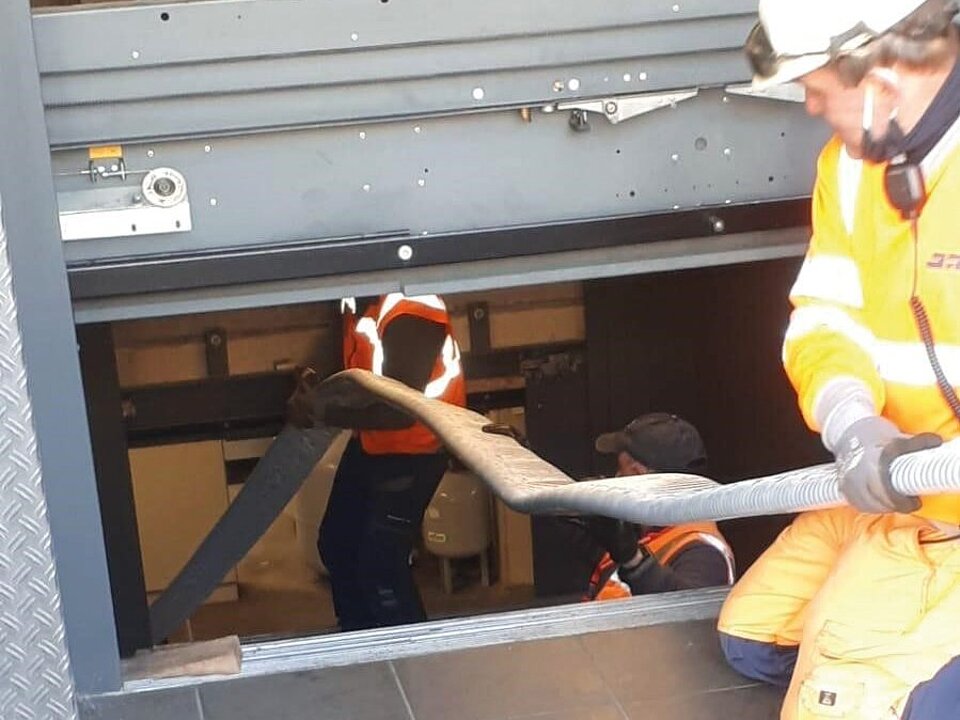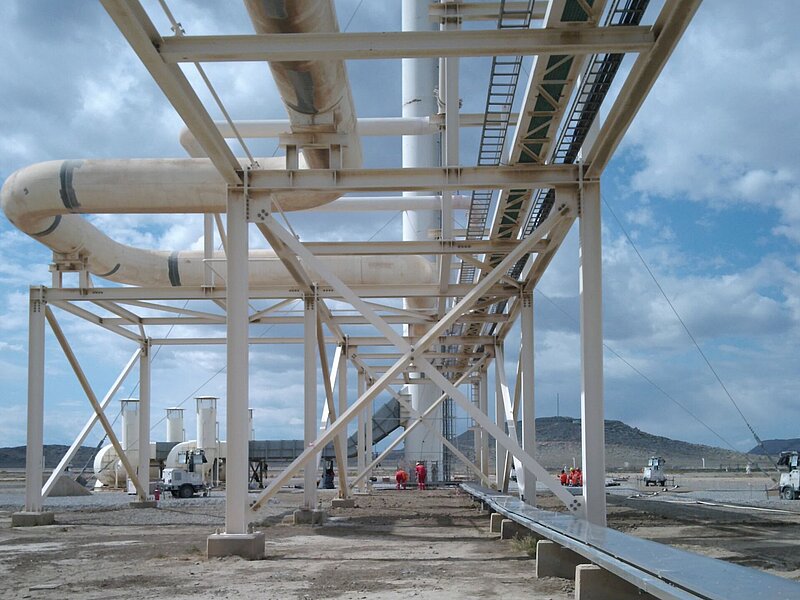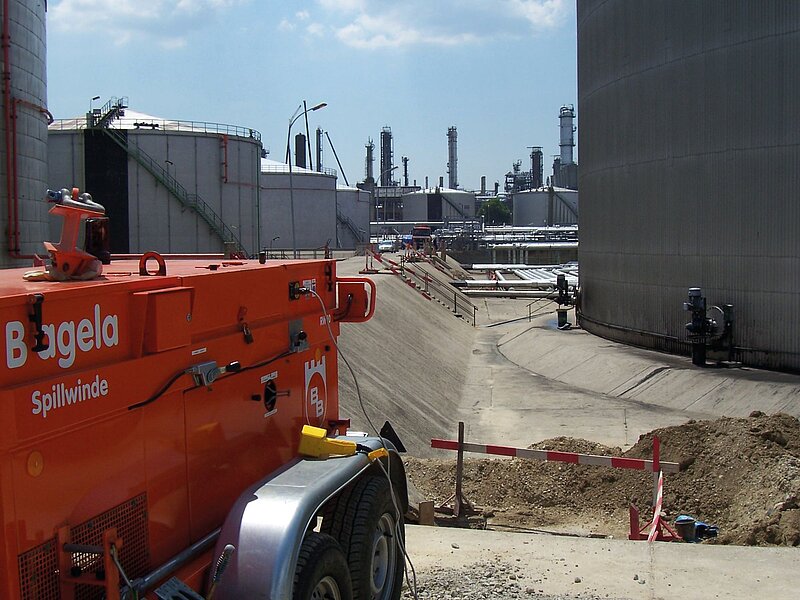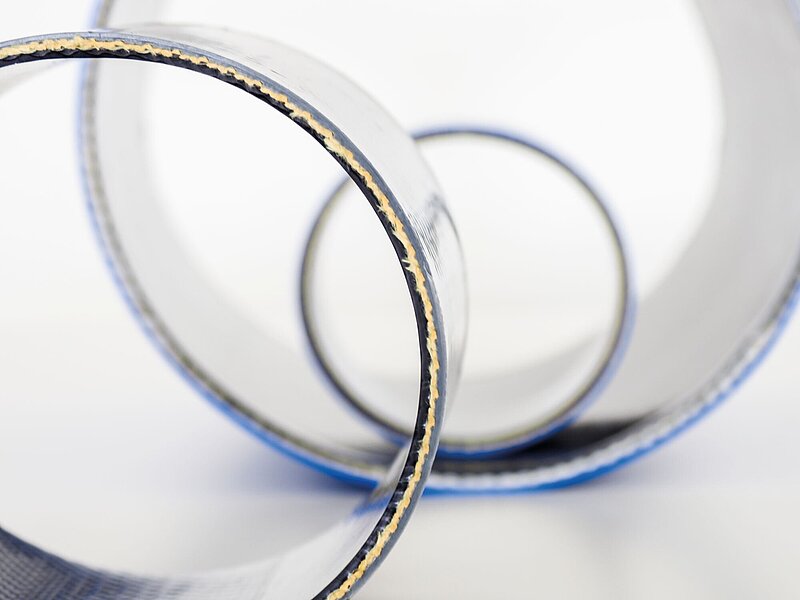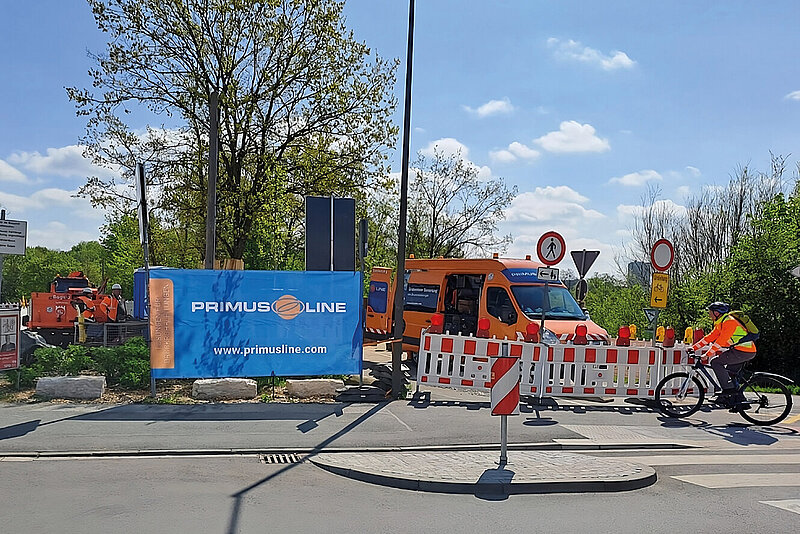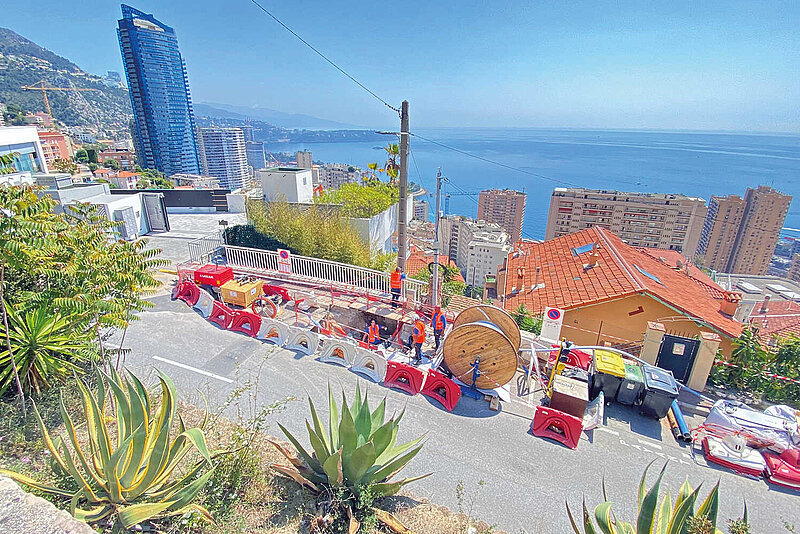For the rehabilitation of fire water mains, operators are often faced with major challenges, both in technical as well as economic points of view: High pressure ratings up to sixteen bar, the limited accessibility of the pipe by overlapping or crossing other pipelines or power lines, lining in concrete and, above all, safety regulations during rehabilitation significantly complicate maintenance work.
Short downtimes are essential for continued operation. With its special properties, Primus Line® helps to overcome these hurdles: Short installation time with minimum space requirements for equipment and small construction pits, high operating pressures of the liner that are absorbed completely independently of the host pipe, and the simultaneously low wall thickness of the liner constitute an ideal system for renovating critical infrastructure such as fire water mains. “Primus Line® has already proven its advantages in this respect – and it does not matter whether the section to be rehabilitated is twenty or two hundred metres, as the following projects show,” explains Michael Senbert, head of the business unit for the DACH region at Rädlinger primus line GmbH.
